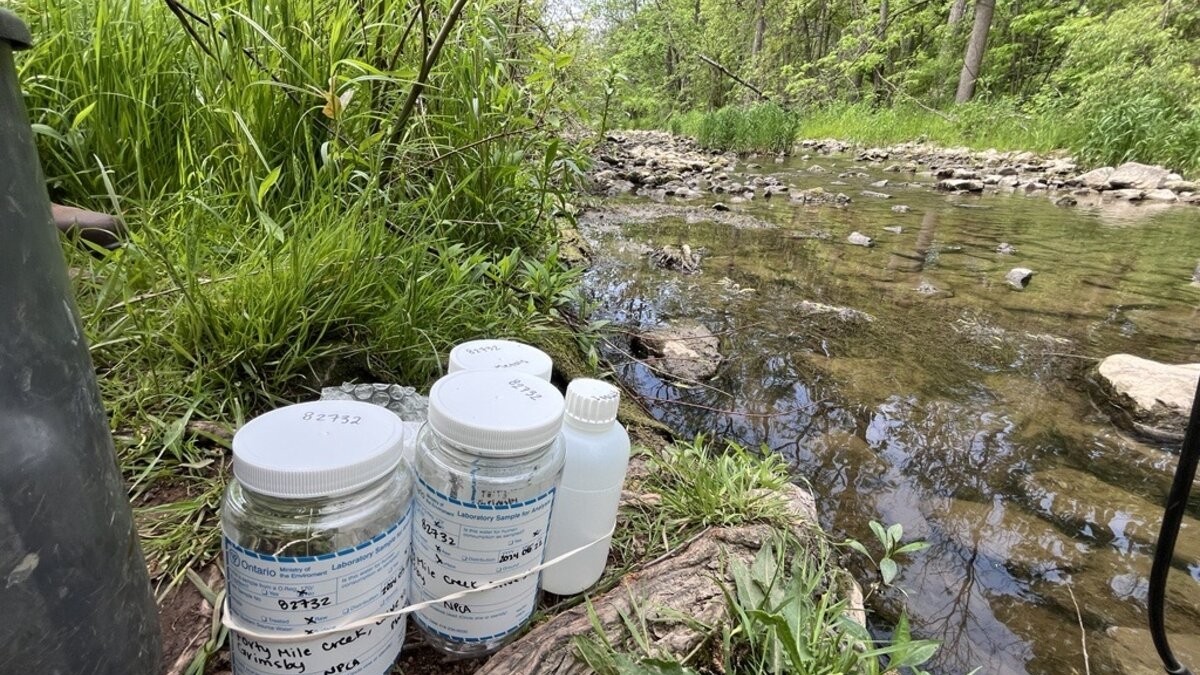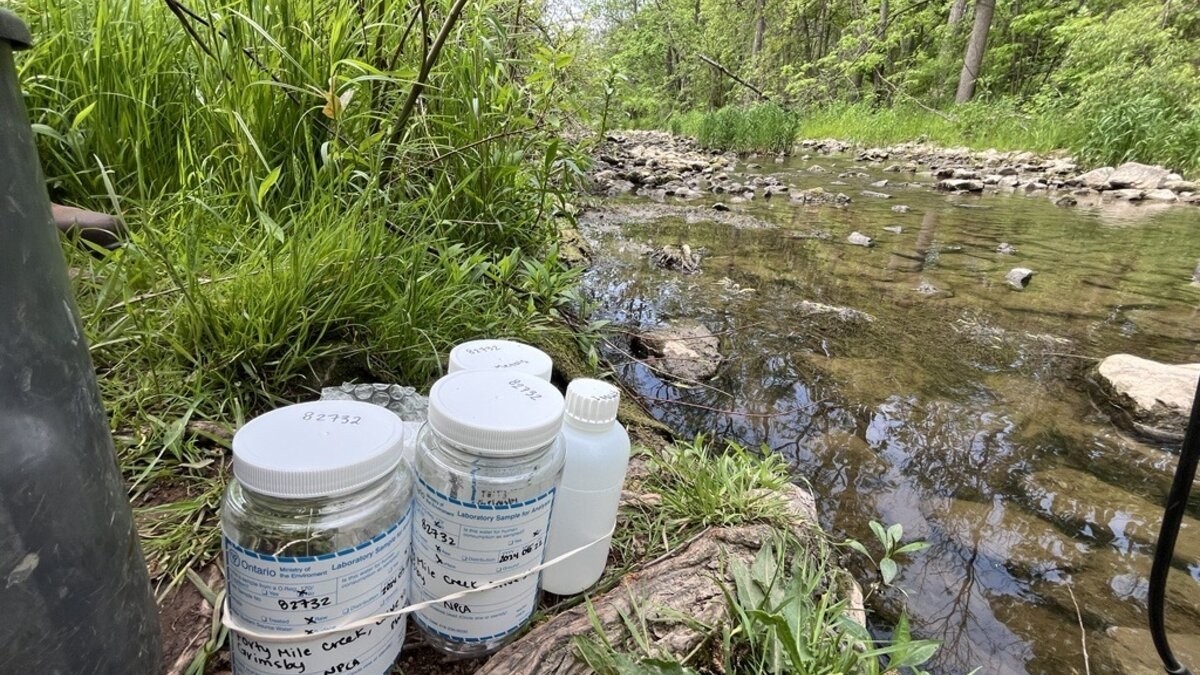The Niagara Peninsula Conservation Authority (NPCA) is pleased to celebrate the 60th anniversary of the Provincial Water Quality Monitoring Network (PWQMN) with the Province of Ontario. Did you know that the first PWQMN sample was collected on June 10, 1964, on a site on the North Maitland River? The North Maitland River empties into Lake Huron at the Town of Goderich.
The PWQMN program is operated in partnership with municipalities, Conservation Authorities, and the Ontario Ministry of Environment, Conservation, and Parks. NPCA has participated since 2003, collecting more than 1,600 PWQMN samples! These help monitor water quality in rivers and streams across the Niagara Peninsula watershed, providing a valuable database for tracking changes in water quality over time.
NPCA’s extensive water quality monitoring program monitors surface water of major and smaller watercourses. The data gathered is shared through the PWQMN and helps NPCA, the Province of Ontario, and other key organizations understand how surface water systems function as well as the overall health of Ontario’s streams and watersheds. This monitoring also helps us understand the impacts of land use activities on water quality.
NPCA provides annual summaries of its Water Quality Monitoring Program. While the 2023 report is being finalized, we invite you to learn about this important data, what it is telling us, and what you can do to help improve local water quality!
Summary Report of the Year 2022.
Water Quality Fact Sheet 2022.
FUN FACT:
The upper Twelve Mile Creek and Welland River tributaries have the best naturally occurring water quality due to natural tree cover and large input of groundwater. Other watersheds such as the Lower Twelve Mile Creek, Lower Welland River and Welland Canal have good water quality owing to the strong influence of water input of Lake Erie and the Niagara River.

